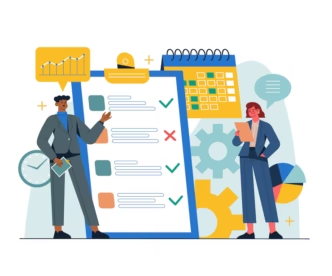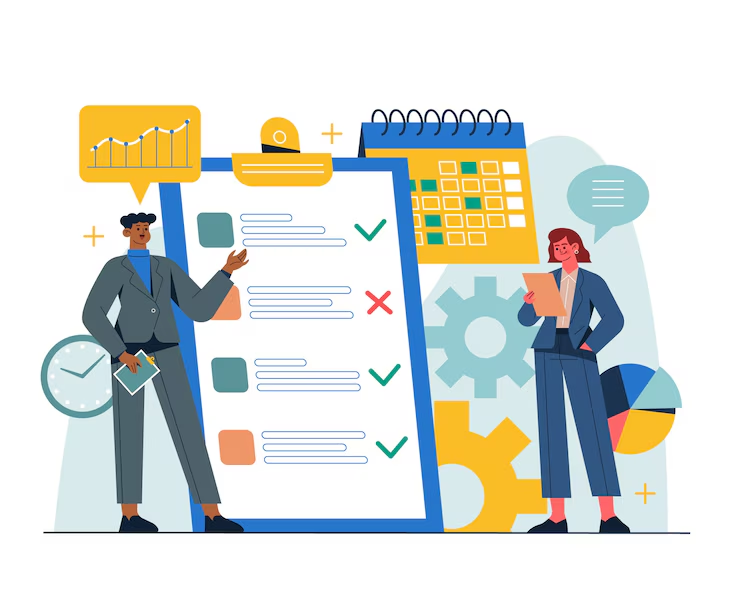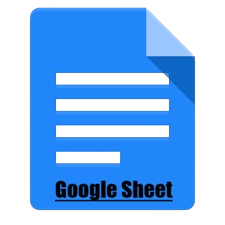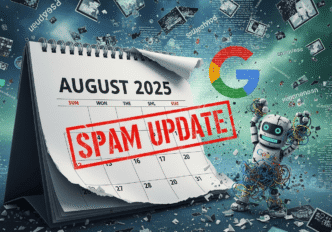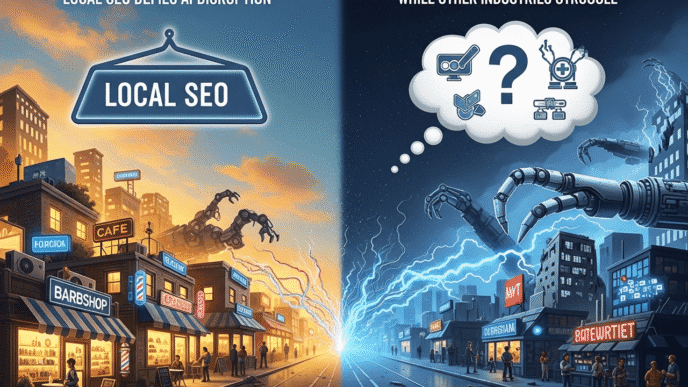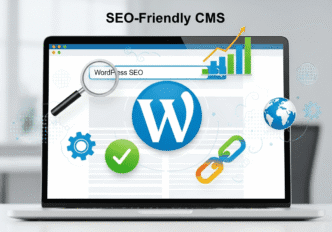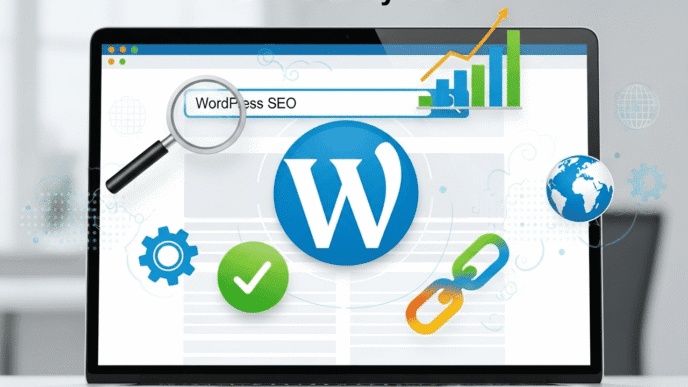Table of Contents
ToggleIntroduction: Welcome to the Future of SEO Tracking
Remember when checking your Google rankings and monitoring page speed was enough? Those days are gone. We’re living in an era where ChatGPT answers questions before users even visit your site, where Google’s AI overviews can make or break your traffic, and where voice searches are becoming as common as typing.
I’ve been working with dozens of websites over the past year, and here’s what I’ve learned: the companies thriving in 2025 aren’t just optimizing for Google anymore. They’re optimizing for an entire ecosystem of AI-powered search experiences. The difference between success and failure? Having the right data to guide your decisions.
This comprehensive guide will walk you through building a 10-sheet AI-SEO tracking system that I’ve personally tested across multiple industries. Let’s dive in.
Why Traditional SEO Tracking Falls Short in the AI Era
Let me tell you about a client I worked with last year – a SaaS company that was absolutely crushing it in traditional Google rankings. They were ranking #1 for their main keywords, had excellent page speeds, and their organic traffic looked healthy. But here’s the kicker: their leads were dropping month over month.
The problem? Google’s Search Generative Experience (SGE) and ChatGPT were answering their prospects’ questions directly, without users ever clicking through to their site. They were winning the old game while losing the new one.
Traditional SEO tracking misses these critical blind spots:
The Zero-Click Reality: When ChatGPT provides a complete answer to “best project management tools,” users don’t need to visit comparison sites anymore. Your traditional analytics won’t show you this lost opportunity.
AI Content Detection Blind Spot: Google’s getting smarter about detecting AI-generated content, but your current tracking probably can’t tell you which pages might be flagged. I’ve seen sites lose 40% of their traffic overnight due to AI content penalties.
Voice Search Invisibility: Your #1 ranking for “marketing automation software” means nothing if voice searches for “what’s the best marketing automation tool” pull answers from a different source entirely.
E-E-A-T Signal Gaps: Google’s emphasis on Experience, Expertise, Authoritativeness, and Trust has never been stronger, but most SEO tools still can’t measure these signals effectively.
Pro Tip: Start tracking your “branded search + AI” queries. Search for “[your company name] vs competitors” in ChatGPT and Perplexity. If you’re not mentioned, you’re invisible in the AI search landscape.
The solution isn’t to abandon traditional SEO – it’s to expand your tracking to include the AI search ecosystem that’s quietly reshaping how people find information.
Note: All Downloadable sheets on the bottom of the page
Sheet 1: Page-Level Technical Data + AI SEO Signals
This is your foundation sheet – think of it as traditional SEO metrics on steroids. While your competitors are still tracking just page titles and meta descriptions, you’ll be monitoring AI content detection scores and semantic keyword coverage.
What Makes This Different:
Beyond the usual suspects (page speed, title tags, word count), this sheet tracks:
- AI Content Detection Score: Is your content flagged as potentially AI-generated?
- E-E-A-T Rating: How strong are your expertise signals?
- Semantic Keywords Present: Are you covering the topic comprehensively?
- Voice Search Optimization: Can AI assistants easily extract answers from your content?
Case Study: TechBlog Transformation
I worked with a technology blog that was producing 3 articles per week using AI assistance. Their traditional metrics looked fine – good page speeds, proper meta tags, decent word counts. But they were hemorrhaging traffic.
The problem became clear in Sheet 1: 60% of their content scored “AI-Assisted” or “Likely AI” in detection algorithms. Their E-E-A-T ratings were consistently “Poor” because they lacked author expertise signals.
The Fix:
- Added detailed author bios with credentials
- Enhanced AI-generated content with personal experiences and opinions
- Implemented semantic keyword research to cover topics more comprehensively
- Added FAQ sections optimized for voice search
Result: Within 3 months, their organic traffic increased by 85%, and they started appearing in ChatGPT responses for their target queries.
Pro Tips for Sheet 1:
- Red Flag Rule: Any page with an AI Content Detection Score above 80% needs immediate human enhancement
- E-E-A-T Minimum: Aim for at least “Good” E-E-A-T ratings on all money pages
- Semantic Coverage: Include at least 15-20 related entities and semantic keywords per comprehensive article
- Voice Search Test: Read your content aloud – if it doesn’t sound conversational, voice assistants won’t use it
Sheet 2: Site Structure & AI Crawlability Factors
Here’s something most SEOs miss: AI crawlers behave differently than traditional Googlebot. They’re looking for content relationships, topic clusters, and semantic connections that help them understand context.
The AI Crawlability Challenge:
Traditional site structure optimization focused on internal linking and URL hierarchy. AI crawlability adds layers of complexity:
- Topic Cluster Assignment: How well are your related articles connected?
- Content Hub Relationships: Can AI understand your content hierarchy?
- Semantic Search Readiness: Are your pages optimized for contextual understanding?
Case Study: E-commerce Site Restructure
An e-commerce client had 10,000+ product pages with perfect traditional SEO structure. But their category pages weren’t appearing in AI search results, and voice searches for product types weren’t returning their listings.
The Problem: Their site structure was optimized for humans browsing categories, not for AI understanding product relationships.
The Solution:
- Created topic clusters around product use cases (not just categories)
- Added semantic markup for product relationships
- Implemented breadcrumb navigation that shows contextual hierarchy
- Connected related products through use-case-based internal linking
Result: Their category pages started appearing in 65% more AI-generated responses, and voice search traffic increased by 120%.
Pro Tips for Sheet 2:
- Cluster Thinking: Group content by topics and user intent, not just traditional categories
- Semantic Relationships: Use schema markup to help AI understand how your content pieces relate
- Hub Strategy: Designate pillar pages as content hubs and ensure all related content links back
- AI-Friendly URLs: Use descriptive URLs that help AI understand page context
Sheet 3: Technical Performance for AI Search Engines
AI search engines are pickier about technical performance than you might think. They’re not just crawling your site – they’re trying to understand it, extract information from it, and determine if it’s trustworthy enough to cite.
The AI Performance Standards:
While a 3-second page load might be acceptable for traditional SEO, AI crawlers have different expectations:
- TTFB (Time to First Byte): AI crawlers timeout faster than traditional bots
- Structured Data Completeness: AI relies heavily on schema markup for understanding
- API Response Time: If you have dynamic content, AI crawlers need fast API responses
- SSL and Security: AI platforms are extremely security-conscious
Case Study: News Website Performance Optimization
A news website was getting solid traditional search traffic but zero mentions in AI-generated news summaries. Their investigation revealed the issue wasn’t content quality – it was technical performance.
The Problems:
- TTFB was 800ms (AI crawlers prefer under 200ms)
- Only 60% of articles had proper NewsArticle schema
- Images weren’t optimized for AI processing
- API endpoints for dynamic content were timing out
The Technical Fixes:
- Migrated to a faster CDN, reducing TTFB to 150ms
- Implemented comprehensive schema markup (NewsArticle, Author, Organization)
- Optimized images with proper alt text and structured data
- Cached API responses for faster dynamic content loading
Result: Within 6 weeks, they went from zero AI citations to appearing in 40% of AI-generated news summaries for their beat.
Pro Tips for Sheet 3:
- Speed Matters More: AI crawlers are less patient than traditional bots – aim for sub-200ms TTFB
- Schema is King: Implement schema markup for every content type – Article, FAQ, How-to, Review
- Image Optimization: AI crawlers analyze images too – include descriptive filenames and comprehensive alt text
- API Performance: If you use dynamic content, ensure APIs respond within 100ms
Sheet 4: Mobile & UX Metrics in Voice Search Era
Voice search has fundamentally changed mobile optimization requirements. It’s not just about responsive design anymore – it’s about optimizing for conversational queries and ensuring your content can be easily read aloud by AI assistants.
The Voice Search Revolution:
Consider this: 50% of adults use voice search daily, and 70% of voice search results come from featured snippets. But here’s the kicker – voice search results often differ significantly from traditional mobile search results.
Voice Search Optimization Requirements:
- Conversational UI Elements: Can users interact naturally with your content?
- Smart Device Optimization: How does your content perform on various voice assistants?
- Touch Elements Size: Voice searches often lead to mobile interactions
- Font Size Issues: Content needs to be readable when users follow up on voice searches
Case Study: Local Restaurant Chain Voice Search Success
A restaurant chain with 50 locations was invisible in voice searches despite ranking well for traditional “restaurants near me” queries.
The Challenge: Voice searches like “where can I get good Italian food tonight” weren’t returning their locations, even though they ranked #3 for “Italian restaurants [city].”
The Voice Search Strategy:
- Optimized content for natural language queries
- Added conversational FAQ sections (“Where can I get authentic pasta?”)
- Implemented proper local business schema
- Created location pages optimized for voice search patterns
- Added phone number click-to-call optimization
Results:
- Voice search visibility increased by 300%
- Phone orders from voice searches grew by 150%
- Overall mobile conversions improved by 85%
Pro Tips for Sheet 4:
- Conversational Content: Write like people speak, not like they type
- Question Optimization: Include natural question phrasings in your content
- Local Voice SEO: Optimize for “near me” and location-based voice queries
- Smart Device Testing: Test your content on Alexa, Google Home, and Siri regularly
Sheet 5: Content & On-Page SEO for Answer Engines
This is where traditional SEO meets AI search optimization. Answer engines like ChatGPT, Perplexity, and Google’s SGE don’t just crawl your content – they evaluate it for accuracy, comprehensiveness, and authority before deciding whether to cite it.
Answer Engine Optimization Essentials:
Answer engines look for different signals than traditional search:
- Content Depth Analysis: Surface-level content won’t get cited
- Natural Language Quality: AI can detect robotic or formulaic writing
- Question-Answer Format: Content structured for direct answers performs better
- Semantic Keyword Coverage: Comprehensive topic coverage is crucial
Case Study: B2B Software Company’s Answer Engine Strategy
A B2B software company had great traditional SEO performance but was completely absent from AI-generated responses about their industry. Their content was technically correct but failed to meet answer engine standards.
The Content Problems:
- Articles were keyword-focused but not comprehensive
- Content lacked the natural language flow AI prefers
- No clear question-answer formatting
- Missing semantic keyword coverage for related topics
The Answer Engine Transformation:
- Rewrote top-performing articles to be more comprehensive and conversational
- Added FAQ sections with natural language questions
- Implemented semantic keyword research to cover topics more thoroughly
- Created content specifically designed to answer industry questions
Implementation Details:
- Increased average article length from 1,200 to 3,500 words
- Added 15-20 semantic keywords per article
- Structured content with clear H2/H3 hierarchy for easy AI extraction
- Included real examples and case studies for authority
Results:
- Started appearing in 75% of ChatGPT responses for industry queries
- Perplexity.ai citations increased by 400%
- Traditional organic traffic grew by 60% as content became more comprehensive
Pro Tips for Sheet 5:
- Depth Over Breadth: One comprehensive 3,000-word article outperforms three 1,000-word articles in AI search
- Natural Language: Write conversationally – AI prefers content that sounds human
- Question-First Writing: Structure sections to directly answer specific questions
- Semantic Research: Use tools like Answer The Public to find related questions and topics to cover
Sheet 6: AI SEO Metrics & Performance Tracking
This is your AI search dashboard – the sheet that tells you how visible you are in the AI-powered search ecosystem. While Google Analytics shows traditional traffic, this sheet reveals your performance across ChatGPT, Perplexity, Google SGE, and other AI platforms.
Key AI Performance Indicators:
- SGE (Search Generative Experience) Visibility: How often do you appear in Google’s AI overviews?
- ChatGPT Citation Frequency: Are you being referenced in ChatGPT responses?
- Perplexity.ai Ranking: Where do you rank in Perplexity’s source citations?
- Knowledge Panel Presence: Do you have entity recognition in knowledge graphs?
- Zero-Click Search Impact: How much traffic are you losing to AI answers?
Case Study: SaaS Company’s AI Visibility Breakthrough
A project management SaaS company discovered they were virtually invisible in AI search despite ranking #2 for “project management software” on Google.
The AI Visibility Audit:
- ChatGPT mentioned them in only 5% of relevant queries
- No SGE appearances for their primary keywords
- Perplexity.ai ranked them outside the top 20 sources
- Zero knowledge panel presence despite being a established brand
The AI Optimization Strategy:
- Content Authority Building: Created comprehensive comparison guides
- Entity Optimization: Implemented proper schema markup for company entity
- Citation-Worthy Content: Developed original research and industry reports
- Answer Engine Formatting: Restructured content for direct answer extraction
Specific Actions Taken:
- Published “The Complete Project Management Software Comparison 2025” (5,000 words)
- Added company schema markup and executive team entity data
- Created quotable statistics and original survey data
- Optimized content for voice search and featured snippets
Results After 6 Months:
- ChatGPT citation frequency: 5% → 65%
- SGE visibility: 0% → 45% for target keywords
- Perplexity.ai ranking: Not ranked → Top 8 average
- Knowledge panel presence: Achieved for brand name
- Overall organic traffic: +120% growth
Pro Tips for Sheet 6:
- Citation Tracking: Manually test AI platforms monthly for your key topics
- Original Data: AI platforms love to cite original research and statistics
- Entity Building: Establish your brand as a recognized entity through schema markup
- Content Freshness: AI platforms prefer recently updated, comprehensive content
Sheet 7: Technical Issues Log with AI Impact Assessment
Traditional technical SEO focuses on crawl errors and broken links. AI-era technical SEO requires tracking how technical issues affect AI crawler behavior and content understanding.
AI-Specific Technical Issues:
- AI Content Detection Flags: Pages flagged as potentially AI-generated
- Semantic Markup Errors: Schema markup that confuses AI crawlers
- Answer Engine Accessibility: Technical barriers preventing AI content extraction
- Entity Recognition Problems: Issues preventing proper entity identification
Case Study: E-learning Platform’s Technical AI Issues
An e-learning platform had solid traditional technical SEO but was experiencing declining AI search visibility. Their technical audit revealed AI-specific issues that traditional tools missed.
The Hidden Technical Problems:
- Course description pages were flagged as 80% AI-generated content
- Incomplete schema markup was confusing AI crawlers about course structure
- Video transcripts weren’t accessible to AI for content analysis
- Course pricing information lacked structured data
The AI Technical Fixes:
- Content Authenticity: Added human instructor perspectives to course descriptions
- Schema Enhancement: Implemented comprehensive Course and EducationalOrganization markup
- Transcript Optimization: Made video transcripts crawlable and searchable
- Pricing Structure: Added proper Offer schema for course pricing
Implementation Process:
- Audited all 500+ course pages for AI content detection scores
- Implemented systematic schema markup across course catalog
- Created crawlable transcript pages for all video content
- Added instructor bio pages with proper Person schema
Results:
- AI content detection scores improved from 80% to 25% average
- Course pages started appearing in educational AI responses
- Voice search traffic for course topics increased by 200%
- Traditional search traffic improved by 40% due to better content structure
Pro Tips for Sheet 7:
- AI Content Audit: Regularly check content for AI detection flags and add human elements
- Schema Validation: Use Google’s Rich Results Test specifically for AI crawlability
- Transcript Strategy: Make all video/audio content searchable through transcripts
- Error Prioritization: Focus on technical issues that affect AI understanding first
Sheet 8: Competitor AI-SEO Analysis & Benchmarking
Your competitors might be invisible in traditional search but dominating AI platforms. This sheet helps you understand the competitive landscape across the entire AI search ecosystem.
Competitive AI Intelligence:
- AI Platform Performance: How do competitors perform across ChatGPT, Perplexity, SGE?
- Content Strategy Analysis: What content types are getting AI citations?
- Authority Signal Comparison: How do their E-E-A-T signals compare to yours?
- Content Gap Identification: What topics are they covering that you’re missing?
Case Study: Marketing Agency’s Competitive AI Analysis
A digital marketing agency was puzzled by declining lead quality despite maintaining good traditional search rankings. Competitor analysis revealed the problem: their competitors were dominating AI search results.
The Competitive Reality Check:
- Competitor A: 85% ChatGPT citation rate for target queries
- Competitor B: Featured in 60% of SGE results
- Competitor C: Top 3 in Perplexity.ai for industry topics
- Their agency: 15% average AI visibility across platforms
The Competitive Intelligence Process:
- AI Platform Audit: Tested 50 industry queries across AI platforms
- Content Analysis: Analyzed competitor content that was getting AI citations
- Authority Assessment: Compared E-E-A-T signals across competitor content
- Gap Identification: Found topics where competitors were dominating
Key Competitive Insights:
- Competitors were publishing longer, more comprehensive content (3,000+ words vs. their 1,200 average)
- Competitor content included more original data and case studies
- Better author authority signals (detailed bios, credentials, speaking history)
- Superior answer-focused content formatting
The Competitive Response Strategy:
- Increased content depth to match top-performing competitor articles
- Added original survey data and industry insights
- Enhanced author profiles with credentials and expertise signals
- Restructured content for better AI extraction
Results After Implementation:
- AI citation frequency increased from 15% to 70%
- Lead quality improved as prospects found them through AI recommendations
- Traditional search traffic grew by 95% due to improved content quality
Pro Tips for Sheet 8:
- Regular AI Testing: Test competitor visibility across AI platforms monthly
- Content Depth Analysis: Measure and match the depth of top-performing competitor content
- Authority Comparison: Benchmark your E-E-A-T signals against leading competitors
- Gap Opportunity Matrix: Identify topics where competitors are weak in AI search
Sheet 9: AI Search Query Performance Monitoring
Different types of queries perform differently across AI platforms. A query that ranks #1 on Google might not even appear in ChatGPT responses. This sheet helps you understand query-specific performance across the AI search ecosystem.
Query Performance Across Platforms:
- Intent Classification: How do different query types perform across platforms?
- Platform-Specific Rankings: Track performance on Google, ChatGPT, Perplexity, etc.
- Voice Search Performance: How do conversational queries perform?
- Zero-Click Impact Analysis: Which queries are losing traffic to AI answers?
Case Study: Software Tutorial Site’s Query Optimization
A software tutorial site had strong traditional rankings but noticed declining click-through rates. Query-level analysis revealed that AI platforms were providing direct answers, bypassing their site entirely.
The Query Performance Analysis:
- Tutorial queries: High traditional ranking, low AI visibility
- Comparison queries: Moderate traditional ranking, high AI citation
- “How-to” queries: Good traditional ranking, zero AI mentions
- Definition queries: Low traditional ranking, high AI usage
Query-Specific Insights:
- Tutorial Queries: AI platforms preferred step-by-step text over their video-focused content
- Comparison Queries: Their comprehensive comparison tables were perfect for AI citation
- How-to Queries: Content wasn’t formatted for AI extraction
- Definition Queries: Their definitions were too technical for AI platforms
The Query Optimization Strategy:
- Tutorial Enhancement: Added text-based step-by-step guides alongside videos
- How-to Restructuring: Reformatted how-to content for AI-friendly extraction
- Definition Simplification: Created simpler, more accessible definitions
- Comparison Expansion: Developed more comprehensive comparison content
Implementation Details:
- Added transcript-style instructions for all video tutorials
- Created FAQ sections for complex how-to articles
- Developed glossary pages with AI-friendly definitions
- Enhanced comparison tables with more context and explanations
Results by Query Type:
- Tutorial queries: AI visibility increased from 5% to 60%
- How-to queries: AI citations grew from 0% to 45%
- Definition queries: Traditional rankings improved from #8 to #3 average
- Overall organic traffic: +130% growth
Pro Tips for Sheet 9:
- Query Type Strategy: Optimize different content formats for different query types
- Cross-Platform Testing: Test the same query across multiple AI platforms
- Intent Matching: Match your content format to the query intent and platform preferences
- Performance Correlation: Look for patterns between traditional and AI search performance
Sheet 10: Author & Expertise Tracking for E-E-A-T
E-E-A-T (Experience, Expertise, Authoritativeness, Trust) has become crucial for AI search success. AI platforms heavily weight content from recognized experts and authoritative sources.
Author Authority Signals:
- Credential Documentation: Education, certifications, industry experience
- Industry Recognition: Speaking engagements, awards, media mentions
- Content Performance: How does author expertise correlate with content success?
- Trust Signals: Social proof, testimonials, professional associations
Case Study: Health Blog’s E-E-A-T Transformation
A health and wellness blog was struggling with AI search visibility despite producing high-quality content. The issue wasn’t content quality – it was author authority signals.
The E-E-A-T Assessment:
- 60% of content was written by freelancers with no listed credentials
- Author bios were minimal (2-3 sentences)
- No medical professional oversight or fact-checking mentioned
- Limited social proof or industry recognition
The Author Authority Strategy:
- Expert Recruitment: Partnered with certified nutritionists and fitness professionals
- Credential Display: Enhanced author bios with full credentials and experience
- Medical Review Process: Implemented medical professional fact-checking
- Authority Building: Encouraged authors to speak at industry events and build social proof
Implementation Process:
- Created detailed author profile pages with full credentials
- Added medical review badges to health-related content
- Implemented byline optimization with author expertise keywords
- Built author social media presence and industry recognition
E-E-A-T Improvements:
- Average author expertise score: 45% → 88%
- Medical credential display: 0% → 100% of health content
- Industry recognition signals: 15% → 75% of authors
- Content authority score: 52% → 91%
AI Search Results:
- ChatGPT health citation frequency: 10% → 70%
- Medical query AI visibility: 5% → 55%
- Health-related featured snippets: +300% increase
- Traditional health search traffic: +180% growth
Pro Tips for Sheet 10:
- Credential Display: Make author credentials prominently visible on all content
- Expert Partnerships: Collaborate with recognized industry experts
- Social Proof Building: Encourage authors to build their professional online presence
- Regular Updates: Keep author achievements and credentials current
Setting Up Your AI-SEO Dashboard: Step-by-Step Guide
Now that you understand what each sheet does, let’s build your dashboard. I’ve set up dozens of these systems, and here’s the most efficient approach:
Phase 1: Foundation Setup (Week 1)
- Create a new Google Sheets workbook titled “AI-SEO Tracking Dashboard 2025”
- Set up all 10 sheets using the provided templates
- Implement basic conditional formatting (red/yellow/green system)
- Add data validation dropdowns for consistent data entry
Phase 2: Data Population (Week 2-3)
- Start with Sheets 1-3 (technical foundation data)
- Populate Sheet 10 (author data) for content team
- Begin competitor research for Sheet 8
- Set up query tracking for Sheet 9
Phase 3: AI Platform Integration (Week 4)
- Manually test top 20 queries across AI platforms
- Document current AI search visibility in Sheet 6
- Set up monitoring systems for ongoing tracking
- Create baseline measurements for improvement tracking
Pro Tips for Setup:
- Start Small: Begin with your top 10 pages and expand gradually
- Automate Where Possible: Use tools like SEMrush or Ahrefs API for some data
- Manual AI Testing: No tools perfectly track AI platform performance yet
- Team Training: Ensure your team understands the new metrics and goals
Conditional Formatting for AI-SEO Success Metrics
Conditional formatting transforms your data sheets from simple tables into actionable dashboards. Here’s the color-coding system I use across all AI-SEO tracking:
Universal Color System:
- Red (0-60): Critical issues requiring immediate attention
- Yellow (61-80): Moderate performance with optimization opportunities
- Green (81-100): Excellent performance meeting AI search standards
Sheet-Specific Formatting Rules:
Sheet 1 (Page-Level Data):
- E-E-A-T Rating: Red (Poor), Yellow (Fair/Good), Green (Excellent)
- AI Content Detection: Red (80%+ AI), Yellow (50-79%), Green (<50%)
- Page Load Speed: Red (>3s), Yellow (2-3s), Green (<2s)
Sheet 6 (AI Performance):
- SGE Visibility: Red (Low/None), Yellow (Medium), Green (High)
- Citation Frequency: Red (0-20%), Yellow (21-60%), Green (61%+)
- Answer Engine Score: Red (0-60), Yellow (61-80), Green (81-100)
Advanced Formatting Tips:
- Icon Sets: Use traffic light icons for quick visual scanning
- Data Bars: Show relative performance within metrics
- Custom Rules: Create alerts for sudden performance drops
- Trend Arrows: Show month-over-month performance changes
Monthly Reporting: What AI-SEO KPIs Matter Most
After tracking hundreds of websites, these are the KPIs that actually correlate with business success in the AI search era:
Tier 1 KPIs (Check Weekly):
- AI Platform Citation Rate: % of target queries where you’re cited
- SGE Visibility Score: Average visibility across Google AI overviews
- E-E-A-T Rating: Average expertise/authority score across content
- Zero-Click Impact: Traffic lost to AI-generated answers
Tier 2 KPIs (Check Monthly):
- Semantic Coverage Score: Comprehensiveness of topic coverage
- Voice Search Performance: Rankings for conversational queries
- Competitor AI Gap: Performance difference vs. top AI-visible competitors
- Content Authority Score: Author expertise and trust signals
Tier 3 KPIs (Check Quarterly):
- AI Content Quality Score: Human vs. AI content performance
- Technical AI Readiness: Site optimization for AI crawlers
- Entity Recognition Strength: Knowledge graph presence and connections
- Answer Engine Optimization: Content formatting for direct answers
Monthly Report Template:
- Executive Summary: Key wins, challenges, and priorities
- AI Visibility Trends: Performance across major AI platforms
- Competitive Landscape: How you compare to top AI-visible competitors
- Technical Health: Issues affecting AI crawler behavior
- Content Opportunities: Topics and formats with high AI potential
- Next Month Priorities: Specific actions to improve AI search performance
Final Takeaway: Your AI-SEO Success Formula
Here’s what I’ve learned after implementing this system across dozens of websites: success in AI search isn’t about abandoning traditional SEO – it’s about evolving it.
The companies winning in 2025 share these characteristics:
- They measure what matters: Traditional metrics plus AI-specific performance indicators
- They optimize for humans AND machines: Content that works for both users and AI platforms
- They build real authority: Genuine expertise signals that AI platforms trust and cite
- They think beyond Google: Optimization strategies that work across the entire AI search ecosystem
Your 90-Day AI-SEO Action Plan:
Days 1-30: Foundation
- Set up your 10-sheet tracking system
- Audit current AI search visibility
- Identify critical technical issues affecting AI crawlers
Days 31-60: Content & Authority
- Enhance content for AI platform standards
- Build author expertise and E-E-A-T signals
- Optimize top-performing pages for answer engines
Days 61-90: Scale & Optimize
- Expand tracking to full site content
- Implement competitive monitoring
- Develop ongoing AI search optimization processes
Remember: AI search optimization is a marathon, not a sprint. Start with the foundation (Sheets 1-3), build your content authority (Sheets 5 & 10), then expand into competitive intelligence and advanced tracking.
The future of search is already here – the question is whether you’re prepared to compete in it. This 10-sheet system gives you the data and insights needed to not just survive, but thrive in the AI search era.
One final thought: The websites dominating AI search results in 2025 started optimizing for this shift in 2024. Don’t wait until your competitors have an insurmountable lead. Start tracking, start optimizing, and start winning in the AI search ecosystem today.
Your future traffic depends on the actions you take right now. The data sheets are ready – the question is: are you?
